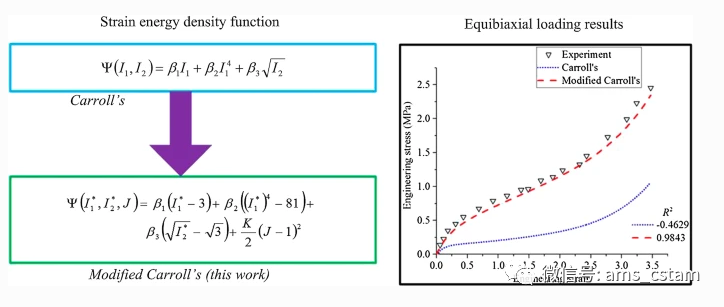
点赞
Improved Carroll's hyperelastic model considering...
发布时间: 2021-09-30 来源:ams_cstam#AMS力学学报英文版
Cite this article: Melly, S.K., Liu, L., Liu, Y. et al. Improved Carroll's hyperelastic model considering compressibility and its finite element implementation. Acta Mech. Sin. 37, 785–796 (2021). https://doi.org/10.1007/s10409-021-01064-4Improved Carroll's hyperelastic model considering compressibility and its finite element implementationStephen Kirwa Melly, Liwu Liu, Yanju Liu, Jinsong LengIn engineering component design, material models are increasingly used in finite element simulations for an expeditious and less costly analysis of the design prototypes. As such, researchers strive to formulate models that are less complex, robust, and accurate. In the realm of hyperelastic materials, phenomenological-based Carroll's model is highly promising due to its simplicity and accuracy. This work proposes its further improvement by modifying the strain energy density function to comply with the restriction that it should vanish at reference configuration and adding a compressible term to capture the practical behavior of elastomeric materials and to avoid numerical problems during finite element implementation. The model constants for both the original and the modified versions were obtained by fitting their respective expressions to the classical Treloar's experimental data using the Levenberg–Marquardt algorithm. The modified model was implemented using Abaqus CAE 2016 via a vectorized user material (VUMAT) subroutine. Comparisons of the model predictions with Treloar's experimental data demonstrated the superiority of the modified version particularly in the equibiaxial loading mode. Moreover, the simulated and the experimentally observed behavior agreed to a great accuracy thus making the modified model suitable for simulating the loading response of components fabricated of elastomeric materials.请点击“阅读原文”, 了解更多文章信息。
展开
收起







 下载app
下载app